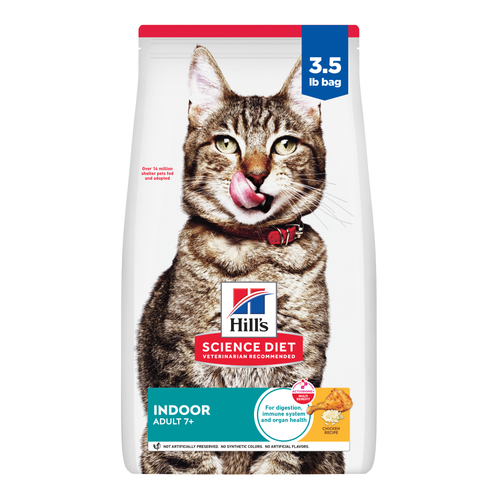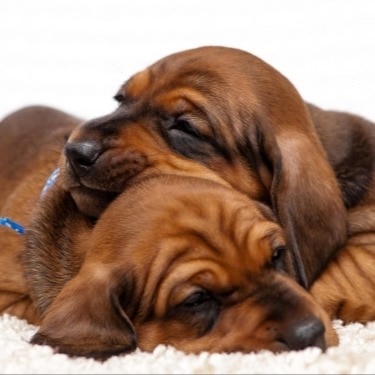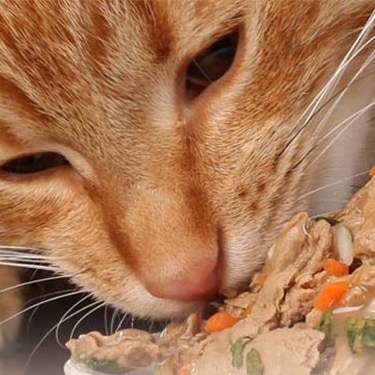

Feline separation anxiety is a condition in which a cat becomes distressed when separated from their caregiver. While cats may be known for being more independent than dogs, not all feline friends relish alone time. Many prefer the safe and trusted presence of a human caregiver. But can cats have separation anxiety? Cat separation anxiety, although similar to dogs, has some distinct differences, which can make it difficult for pet parents to recognize. If you're concerned about your clingy cat, here's what you should know.
What Is Cat Separation Anxiety?
Feline separation anxiety makes itself known through cat stress behaviors that result from a lack of confidence and over-dependence on others. Separation behaviors typically occur when a cat becomes separated from their preferred caregiver.
While the specific causes are unclear, genetics does play a part. Certain cat breeds like Siamese and Ragdolls are more likely to experience feline anxiety.
Environmental factors, such as cat socialization, can also contribute to separation behaviors. For example, kittens separated very early from their mother and hand-raised by humans may bond so strongly with their pet parent that they become anxious when separated. This is why it's so crucial to ensure proper socialization — it builds confidence and helps protect against stress behaviors.
What Are the Signs of Feline Separation Anxiety in Cats?
If you're wondering, "Does my cat have separation anxiety?" you may be surprised by the signs. While dogs often respond to separation anxiety by being destructive, signs of separation anxiety in cats are more subtle. Some of the most common include:
Following you closely
Pre-departure distress, such as vocalizations, hiding, depression
Excessive meowing and yowling after departure
Eliminating (urinating or defecating) on owner-scented locations like your bed or clothes
Refusing to eat or drink while you are absent
Vomiting after you've left
Over-grooming, sometimes self-barbering (licking off fur)
Exuberant greetings when you return
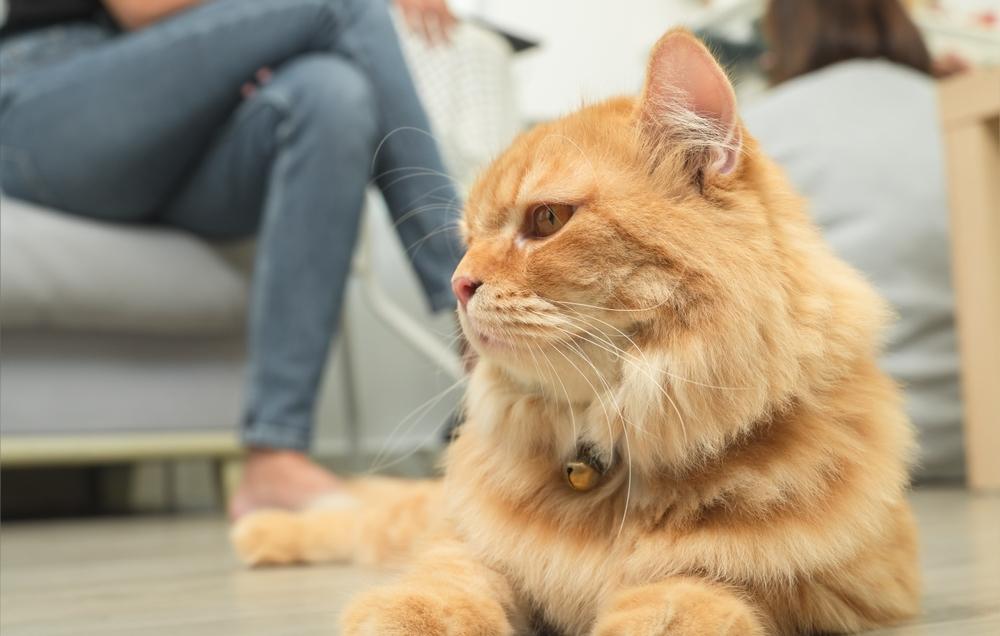
How to Help a Cat With Separation Anxiety
When dealing with cat separation anxiety, training independence isn't always straightforward. Here are some things that may help your cat if they're experiencing separation anxiety:
Desensitization
Stage departures in which you pick up your keys, put on your coat, and leave — only to return immediately. Don't say "goodbye" or make a big deal over your departure. Make these matter-of-fact occurrences, without speaking or acknowledging your cat in any way. By repeating these signals over and over, they lose their power to trigger problem behaviors. Take into account your individual cat's stress levels, though, as this potentially could increase and prolong the cat's anxiety.
For longer trips, it can help to bring your luggage out many days or even a couple of weeks before. Make them part of the furniture, a normal part of the cat's life. You can also drop cat toys or catnip inside to help the cat associate more positive things with the luggage.
Distraction and Enrichment
In many cases, separation behaviors take place within the first ten to twenty minutes of your departure. You can help mitigate this by providing a distraction that encourages the cat to focus on something else. Not only do enrichment opportunities help distract your kitty from your departure, but they can also help reduce stress and regulate emotions. Depending on your cat's personality, these might include:
Textured rubber "licky mats" spread with soft food or treats
Puzzle feeders
Treat-dispensing toys
Toys that move or make noise
Catnip toys
Safe window perches
Nature programs on TV
In addition to these enrichment opportunities, you may find that enlisting the aid of a remote camera helps you monitor your cat's activity, see what keeps them distracted and engaged and interrupt poor behavior. Some also have speakers so you can talk to your cat and even trigger the release of treats remotely.
Be sure to keep a close eye on how many treats you're feeding your pet. They should make up less than 10% of your cat's daily calorie allotment.
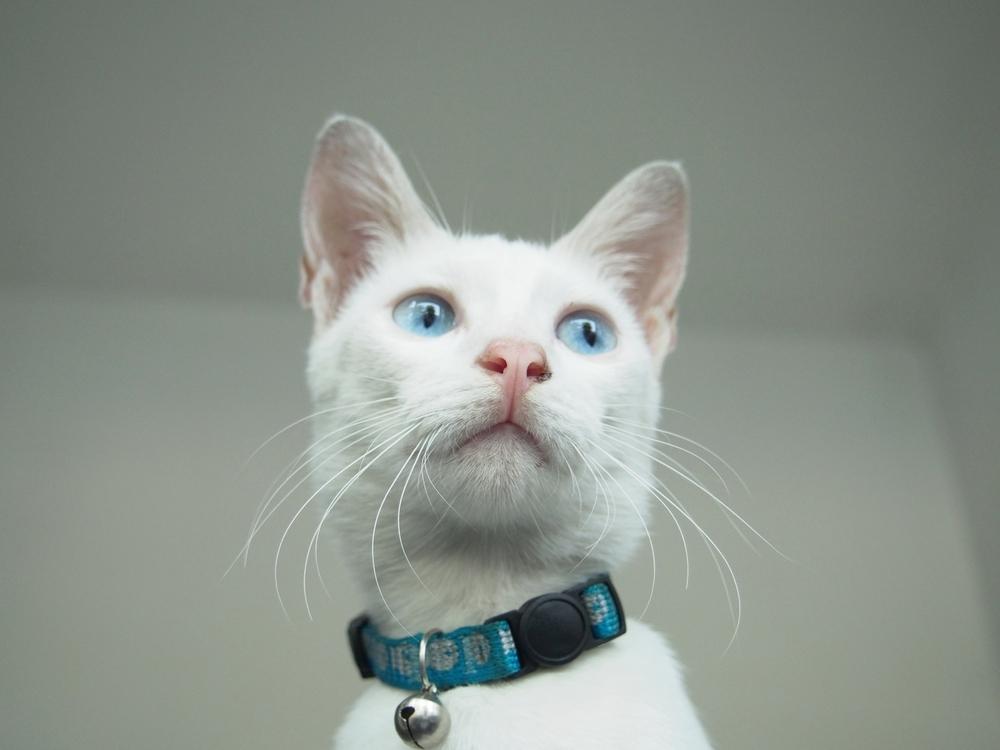
Veterinary Help
Besides behaviors like hit-or-miss litter box problems damaging your bond, prolonged stress impacts your cat's emotional and physical well-being. In addition to the frustration that comes with sporadic litter box usage and other stress-related behaviors, anxiety impacts your bond with your cat and their emotional and physical well-being. Don't hesitate to enlist the aid of your veterinarian or a veterinary behaviorist for more specific suggestions for your individual cat's needs. They may also recommend prescriptions that help relieve the anxiety.
Keeping Your Feline Friend Content
It's endearing when your cat forms a strong bond with you. But in some cases, that deep attachment can lead to emotional stress, turning affection into anxiety. Building confidence and independence doesn't diminish that love, but instead equips them to regulate their emotions and know that you'll come back. With patience and the helpful support of your veterinarian, most cats learn to adapt to periods of alone time, making the periods they spend with their families that much more precious.






